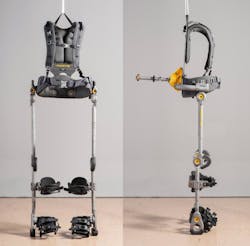While a real-life Iron Man suit may not yet be in the cards, industrial exoskeletons are emerging as viable work assets. Lockheed Martin recently received a contract through the National Center for Manufacturing Sciences (NCMS) for the U.S. Navy to evaluate and test two FORTIS exoskeletons. The unpowered, lightweight FORTIS increases the operator’s strength and endurance by transferring the weight of heavy loads from their body directly to the ground.
FORTIS’ ergonomic design moves naturally with the body, providing flexibility without hindrance. This helps operators work longer and more effectively, minimizing fatigue in physically demanding environments such as shipyards. Equipois’ zeroG arm makes this possible by including various gimbal types to mount different tools and components. Capable of holding objects up to 36 pounds, the zeroG mechanical arm includes a mounting solution along with a gimbal and tool/payload interface based on the application’s requirements.
Although terms of the contract were not disclosed, it marks the first procurement of Lockheed Martin’s exoskeletons for use in the industrial arena. The company’s research and development into exoskeletons over the past five years covers applications from military to industrial. Beyond reducing fatigue, the technology could also help cut down on injuries and subsequent costs.
About the Author
Iliza Sokol
Associate Content Producer
Iliza joined the Penton Media group in 2013 after graduating from the Fashion Institute of Technology with a BS in Advertising and Marketing Communications. Prior to joining the staff, she worked at NYLON Magazine and a ghostwriting firm based in New York.


